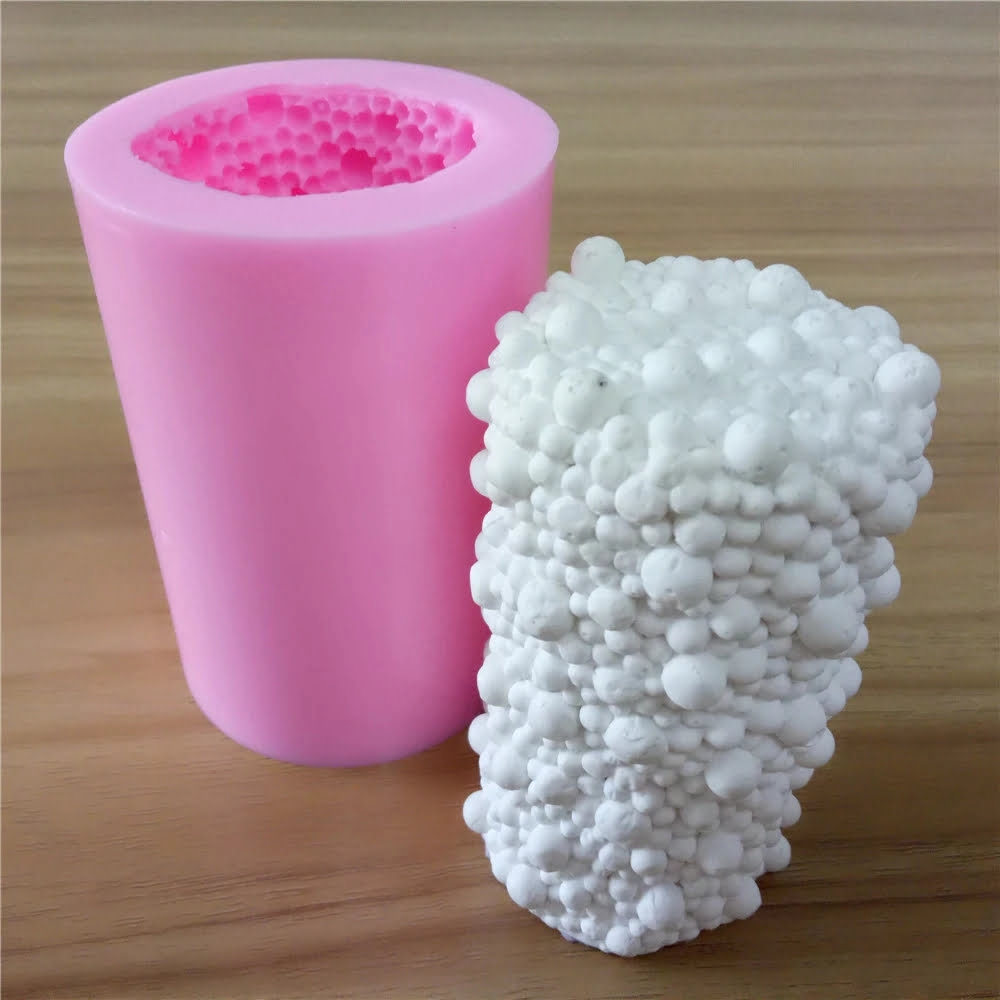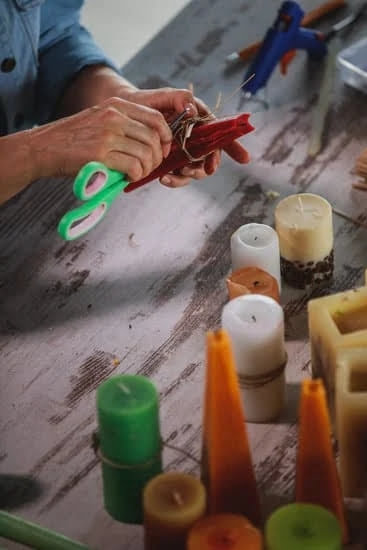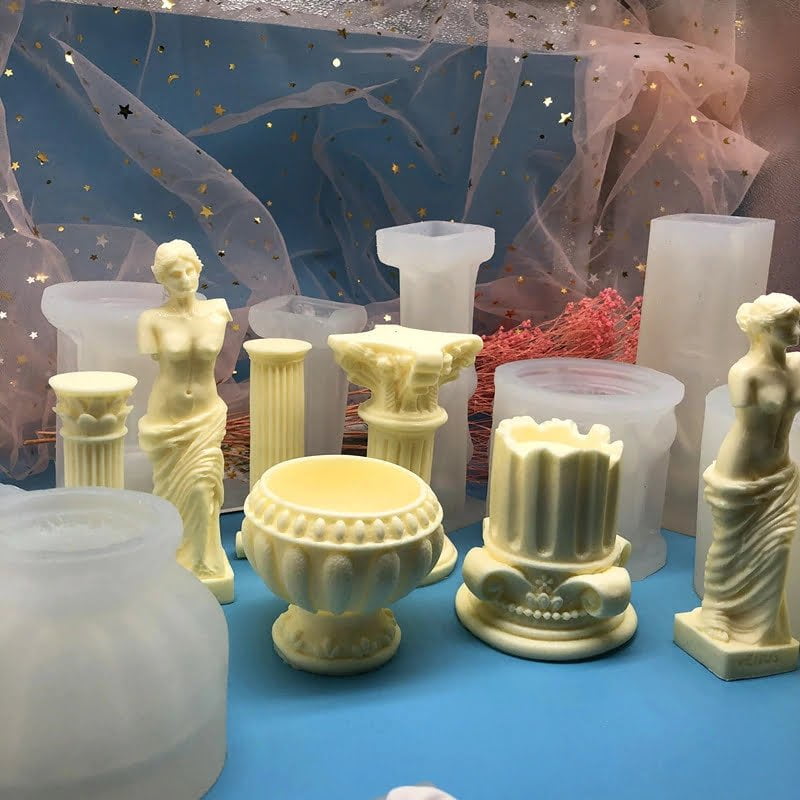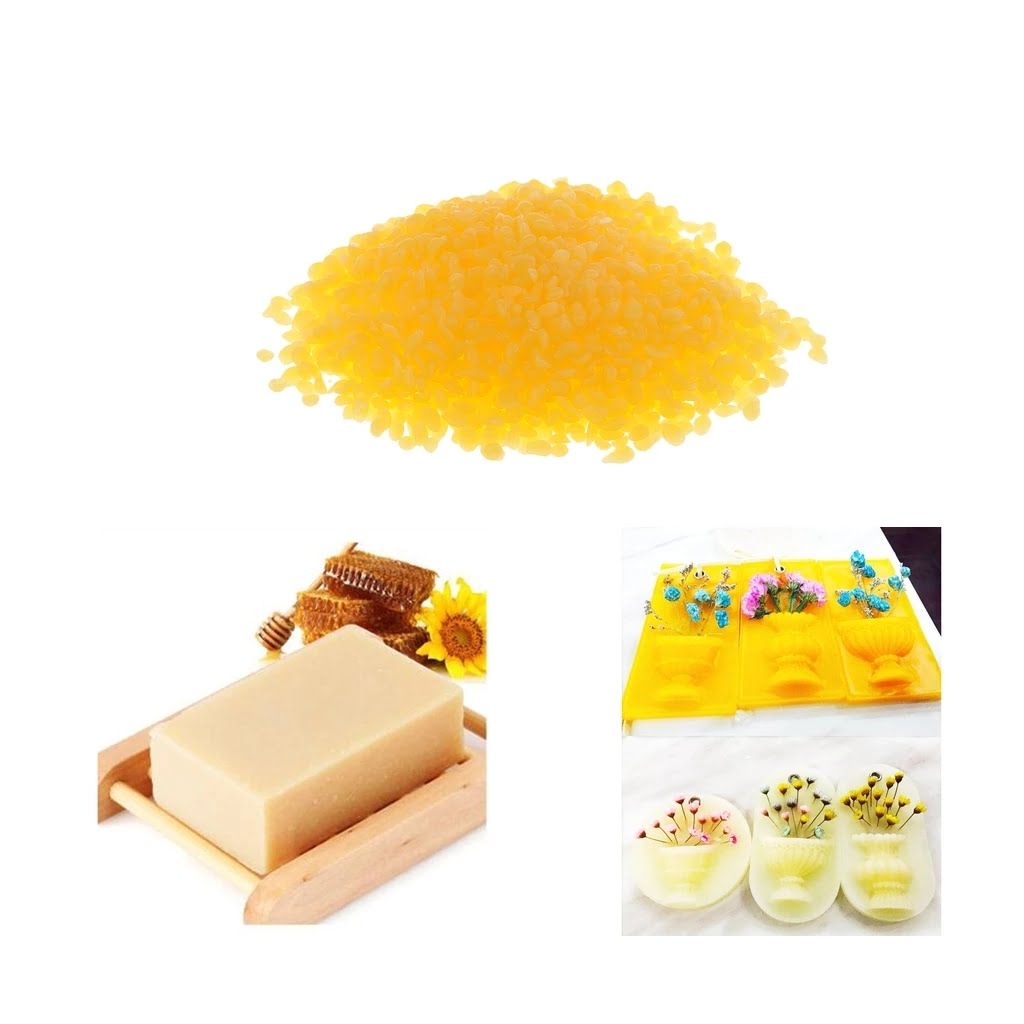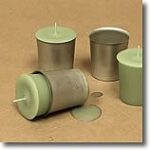If you’ve ever made a candle and noticed that the surface has sinkholes, you’re not alone. This common problem is easily avoidable with a little preparation. Here’s what you can do to fix sinkholes in cooled candles without resorting to a heat gun. First, you should know that wax temperature can affect the formation of sinkholes. After identifying the problem, you should carefully monitor your candle and poke holes with a skewer. Make sure you check for visible air bubbles in the surface. If they appear, poke them gently with a skewer and tap the surface to release trapped air bubbles.
Proper preparation helps prevent sinkholes
Using the right wax type is crucial to avoid sinkholes while making candles. Many beginner candle makers use the wrong type of wax and end up with a sinkhole. To avoid sinkholes and ensure your candles perform properly, follow the tips below. You should also avoid drafts while working. Air conditioners and cool room temperatures encourage sinkhole formation. Make sure the work surface is flat and close to room temperature.
As the candles cool, check the temperature of the wax. A room with temperatures around 70 degrees is ideal for setting candles. The right temperature prevents the wax from hardening too quickly on the outside while sinking in the center. If your wax is too hot, the center will stay hot for too long and a sinkhole will form. Preparation will prevent sinkholes when making candles. Here are some other tips:
The type of wax you use is an important factor in preventing sinkholes. Votive wax is more likely to develop sinkholes than single-pour pillar wax. Make sure to understand the differences in wax types so you don’t waste your time pouring the wrong kind. Also, be sure to know the height of your jar. Taller jars tend to have more sinkholes.
Wax temperature affects sinkhole formation
Sinkholes are formed in the middle of a candle’s surface when the hardened wax will not bond to the wick, causing the candle to sink in the middle. The temperature of the pouring wax affects sinkhole formation, as does the deterioration rate of the wick. When the temperature is too low or the candle is poured too fast, the wax cools too quickly and doesn’t harden fully. As a result, the center of the candle sinks, taking up more space than the outer portion and creating a hole.
The temperature of the container plays a huge role in sinkhole formation. Warm wax helps to form a sinkhole, while cool wax hardens. Proper preparation and monitoring of the temperature will reduce the risk of a sinkhole and prevent future problems. Turn off the air conditioner before pouring. Another tip to prevent sinkholes is to stop pouring when the sides or neck of the jar start to change shape.
Setting candles in a cool room helps prevent sinkhole formation. Usually, 70 degrees is the perfect temperature for setting candles. Be sure to open the oven door while pouring, as the wax will sink to the bottom when it hardens. Also, remember to pour wax in an even temperature to ensure a consistent cooling. Otherwise, the wax will harden too quickly and form a sinkhole. This problem can be avoided by pouring wax in a cool room and using a heat gun to warm up the container.
Alternatives to a heat gun for fixing sinkholes in cooled candles
If you’re trying to repair a sinkhole in a cooled candle, you’ve probably tried using a heat gun. Generally, using a heat gun will work best when the sinkhole is on the outside of the candle, where the wax will cool faster. This will make the sinkhole smaller, but it won’t stop it entirely. There are other solutions, as well.
A heat gun is best for the job, as it heats up the surface of a candle quickly and evenly. The gun can also be used to fill holes. A sinkhole will form if the candle’s surface is unevenly cooled, so it’s best to use the heat gun to ensure that it’s flat before proceeding. Alternatively, you can use a piece of wax to fill the hole.
One of the most effective remedies for fixing sinkholes in cooled candles is to remelt the top of the candle. If you’re using soy wax, it’s a good idea to remelt a small portion of it first to make sure that the surface is even. It’s important to note that remelting the wax is likely to result in a visible line.
Other methods include using an alcohol stove. This method is less effective than using a heat gun, because it produces flammable vapor. However, it’s worth it when a heat gun is not available. This solution won’t be effective for large holes, but will get the job done. And the best part? It works well for soy candles, too. And if a heat gun isn’t an option, try a hairdryer instead. It may work, but it’s definitely slower than using a heat gun. It’s also safer for high-heat resistant glass.
Soy wax is a natural product
Soy wax is a natural product that has a variety of advantages. It holds its scent better than most other types of wax, and it is also non-toxic. Its benefits as a candle-making ingredient are not limited to its environmental benefits. Soy wax can be made into candles in a variety of ways. This article will explore some of the benefits of using soy wax.
Sinkholes occur when the inner part of the candle cools faster than the outer portion, causing air pockets to form in the center. Often, sinkholes appear as small holes near the wick, which eventually lead to larger air pockets beneath the surface. If the wick burns into these air pockets, the entire candle will go down and develop a large crater or sinkhole.
A popular type of soy wax for making candles is massage candles. Massage candles are another popular project. You can melt the parchement paper by using a wax melter, or you can use a large pot on the stove. A double boiler works best for this purpose because it can heat up the wax to a simmer and not overheat it. It takes 5 minutes for the wax to fully melt.
While using a natural product for making candles, it is important to remember that soy wax has a great memory. This means that if you pour too much wax, the candle will not be as dense as you’d like it to be. The wax will begin to harden after a few hours, but it is important to remember that it does not need to cool completely. If it does, you should poke it with a bamboo stick or skewer to check whether it is hard enough to form sinkholes.
Air can become trapped in soy wax during manufacturing process
Soy wax is a vegetable wax made from soybean oil. To make this wax, soybeans are cleaned, de-hulled, and rolled into flakes. The oil is then hydrogenated, a process that changes unsaturated fatty acids into saturated ones and raises the melting point of the wax. Leftover bean husks are also commonly used for animal feed. Soy wax is produced primarily in the U.S., where it is largely grown.
Soy wax can be environmentally friendly and is more affordable than paraffin wax. It also holds scent well and produces less soot than other wax types. When buying a soy wax candle, look for one with a high fragrance load capacity, good cold throw, and non-GMO ingredients. Here are some benefits of soy wax candles:
Fixing sinkholes in cooled candles
You should know that melting wax is one of the most effective tools for fixing sinkholes in cooled candles. Its melting temperature is ideal for pouring the second time; however, if you pour too early, the wax might still have a few air bubbles, and you might end up with a second sinkhole. This is why it is important to stop pouring your candles when the sides and neck of the jar have begun to change shape.
A heat gun works best to melt wax and smooth the surface of the candle. Another tool is a hairdryer, which heats the surface of the candle until the holes are filled. Once the surface of the candle has been melted, you can pour a thin layer over it and smooth the sinkholes. This technique will be more effective for large sinkholes, but it can also work for small holes.
Another important tool for repairing sinkholes in cooled candles is a heat gun. This tool works quickly to heat the surface of the candle. Once the surface has been warmed up, you can insert a wooden dowel or chopstick to poke the hole and fill it with melted wax. Remember to use a heat gun on hot and liquid wax! You can repeat the process as often as you wish to fix sinkholes in cooled candles.
Candles are a popular item to make, and with the popularity comes a certain amount of sinkholes. This is because, like many other items that are made from scratch, there is a learning curve to candle making. The first few candles you make are likely to have some issues – they may not burn evenly, they may not be the right size, or they may not look quite right. This is normal, and it’s part of the learning process.
However, with practice you will get better and better at making candles. You will learn what type of wax to use, how to scent your candles, and how to make them look and burn perfectly. And when you do get good at it, you’ll be able to make candles that are not only beautiful and fragrant, but also highly durable.
One thing to keep in mind, though, is that even the best candles can sometimes develop sinkholes. This is simply a part of the candle making process, and it can’t be avoided. Sinkholes can occur for a variety of reasons, but the most common cause is when the wax is not hot enough.
If you’re having trouble with sinkholes, there are a few things you can do to try and fix them. The first is to make sure your wax is hot enough. The wax should be melted all the way through, and it should be a bright, clear color. If it’s not, then you need to heat it up more.
Another thing you can do is make sure your wick is the correct size. If the wick is too small, it will not be able to hold enough wax, and this will cause the candle to sink. You can fix this by making sure the wick is the right size for your candle, and by trimming it to the correct length.
Finally, you can try using a higher quality wax. This will help to prevent sinkholes from occurring. If you’re having trouble with sinkholes, try using a different type of wax, and see if that solves the problem.
Essential Oils For Candle Making
Candles have been used for centuries for many reasons such as to provide light, to produce heat, or to create a spiritual or romantic atmosphere. Today, candles are also used for aromatherapy. Aromatherapy is the use of essential oils to improve physical, emotional, or spiritual well-being.
There are many different types of candles, and each type can be made with a variety of different scents. The most popular type of candle for aromatherapy is the soy candle. Soy candles are made from soy wax, which is a natural, renewable resource. Soy candles also burn clean and produce little soot.
The most important factor when choosing an essential oil for candle making is the type of candle you are making. For example, if you are making a soy candle, you will want to use an essential oil that is compatible with soy wax. Some essential oils are not compatible with soy wax and will cause the candle to burn improperly.
If you are making a soy candle, you can use any essential oil that you like. However, if you are making a beeswax candle, you will want to use essential oils that are compatible with beeswax. Some essential oils are not compatible with beeswax and will cause the candle to burn improperly.
The most important factor when choosing an essential oil for aromatherapy is the type of oil you are using. For example, if you are using an essential oil for a diffuser, you will want to use an essential oil that is compatible with the type of diffuser you are using. Some essential oils are not compatible with some diffusers and will cause the diffuser to malfunction.
If you are using an essential oil for a diffuser, you can use any essential oil that you like. However, if you are using an essential oil for a humidifier, you will want to use an essential oil that is compatible with the type of humidifier you are using. Some essential oils are not compatible with some humidifiers and will cause the humidifier to malfunction.
The most important factor when choosing an essential oil for aromatherapy is the type of oil you are using. For example, if you are using an essential oil for your skin, you will want to use an essential oil that is compatible with your skin type. Some essential oils are not compatible with some skin types and can cause skin irritation.
If you are using an essential oil for your skin, you can use any essential oil that you like. However, if you are using an essential oil for a massage, you will want to use an essential oil that is compatible with the type of massage you are giving. Some essential oils are not compatible with some massage oils and can cause skin irritation.
The most important factor when choosing an essential oil for aromatherapy is the type of oil you are using. For example, if you are using an essential oil for a bath, you will want to use an essential oil that is compatible with the type of bath you are taking. Some essential oils are not compatible with some bath oils and can cause skin irritation.
If you are using an essential oil for a bath, you can use any essential oil that you like. However, if you are using an essential oil for a foot bath, you will want to use an essential oil that is compatible with the type of foot bath you are using. Some essential oils are not compatible with some foot baths and can cause skin irritation.
The most important factor when choosing an essential oil for aromatherapy is the type of oil you are using. For example, if you are using an essential oil for a diffuser, you will want to use an essential oil that is compatible with the type of diffuser you are using. Some essential oils are not compatible with some diffusers and will cause the diffuser to malfunction.
If you are using an essential oil for a diffuser, you can use any essential oil that you like. However, if you are using an essential oil for a humidifier, you will want to use an essential oil that is compatible with the type of humidifier you are using. Some essential oils are not compatible with some humidifiers and will cause the humidifier to malfunction.
The most important factor when choosing an essential oil for aromatherapy is the type of oil you are using. For example, if you are using an essential oil for a massage, you will want to use an essential oil that is compatible with the type of massage you are giving. Some essential oils are not compatible with some massage oils and can cause skin irritation.
The most important factor when choosing an essential oil for aromatherapy is the type of oil you are using. For example, if you are using an essential oil for a bath, you will want to use an essential oil that is compatible with the type of bath you are taking. Some essential oils are not compatible with some bath oils and can cause skin irritation.
If you are using an essential oil for a bath, you can use any essential oil that you like. However, if you are using an essential oil for a foot bath, you will want to use an essential oil that is compatible with the type of foot bath you are using. Some essential oils are not compatible with some foot baths and can cause skin irritation.
Can You Use Doterra Oils In Candle Making
The short answer is yes, you can use doTERRA oils in candle making. The long answer is a little more complicated.
To start with, it’s important to understand that there are two types of oil-based candles: container candles and pillar candles.
Container candles are made by pouring melted wax into a container of some sort. The most common type of container candle is the votive candle, which is made by pouring wax into a small glass or metal container.
Pillar candles are made by pouring melted wax into a mold, then letting it harden. Pillar candles come in a variety of shapes and sizes, and are often used to create a decorative effect.
When it comes to using doTERRA oils in candle making, the type of candle you’re making will determine the best way to use them.
If you’re making a container candle, you can add doTERRA oils to the wax before you pour it into the container. This will make the candle smell like the oil you used.
If you’re making a pillar candle, you can add doTERRA oils to the wax before you pour it into the mold, or you can add them to the melted wax after the candle has been poured. Adding oils to the melted wax after the candle has been poured is a better option, because it will help the candle last longer.
When adding doTERRA oils to melted wax, you’ll want to use between 1 and 3 drops of oil for every 16 ounces of wax.
If you’re using a scented oil, such as doTERRA’s Citrus Bliss, you’ll want to use less oil, because the scent of the oil will be overpowering.
If you’re using a therapeutic oil, such as doTERRA’s Deep Blue, you’ll want to use more oil, because the scent of the oil will be subtle.
When it comes to using doTERRA oils in candle making, it’s important to experiment a little to find the right combination of oil and wax. The key is to find the right balance between the oil and the wax, so that the candle has a good scent and burns evenly.
Craftbud Candle Making Kit
Candles are a perfect way to relax and enjoy your home. Not only do they provide light and warmth, but they also add a touch of luxury and can be used to fragrance a room.
Making your own candles is a great way to save money and to customize the scent and look of your candles. It’s also a fun project that can be enjoyed with friends or family.
The Craftbud Candle Making Kit provides everything you need to get started making your own candles. The kit includes:
– A glass jar with a metal lid
– A wick
– A metal clip
– A bag of soy wax
– A set of scents
The kit also includes a step-by-step guide that will walk you through the process of making your own candles.
The soy wax included in the kit is made from vegetable oil and is environmentally friendly. It melts at a low temperature, so it is safe to use and it doesn’t produce any harmful toxins.
The scents included in the kit allow you to customize the scent of your candles. The kit includes a variety of scents, including floral, citrus, and woodsy scents.
The metal clip included in the kit allows you to secure the wick in the jar. The wick is made from cotton and is pre-waxed, so it is easy to use.
The glass jar included in the kit is a reusable jar that can be used to store your candles once they are finished.
The Craftbud Candle Making Kit is a great way to get started making your own candles. It provides everything you need to get started, and it includes a variety of scents and a step-by-step guide.
Pourette Candle And Soap Making Supplies
is a company that specializes in the sale of candle and soap making supplies. We offer a wide variety of high quality products, including: soy wax, beeswax, soap making supplies, fragrance oils, and more.
We are dedicated to providing our customers with the best possible experience, from the products we offer to the customer service we provide. We are here to help you every step of the way, from choosing the right products for your project, to giving you tips and advice on how to make the perfect candle or soap.
We are passionate about our products and we know you will be too! If you have any questions, please don’t hesitate to contact us. We would be happy to help you get started on your next candle or soap project.

Welcome to my candle making blog! In this blog, I will be sharing my tips and tricks for making candles. I will also be sharing some of my favorite recipes.

